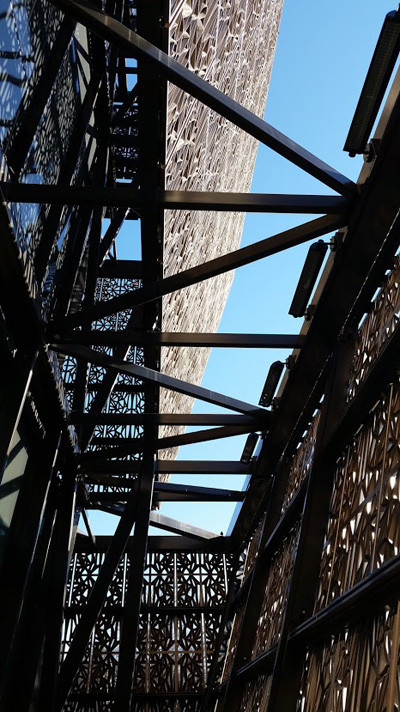 The Smithsonian National Museum of African American History and Culture (NMAAHC) is Washington, D.C.’s latest high-profile structural steel feature. Situated near the Washington Monument, the 400,000-sq.-ft project joins the monument as a centerpiece of the National Mall and will hold various ceremonies and performances, as well as a primary exhibition space for U.S. African American history and culture. It will also likely become the last Smithsonian Museum to be constructed on the Mall.
The Smithsonian National Museum of African American History and Culture (NMAAHC) is Washington, D.C.’s latest high-profile structural steel feature. Situated near the Washington Monument, the 400,000-sq.-ft project joins the monument as a centerpiece of the National Mall and will hold various ceremonies and performances, as well as a primary exhibition space for U.S. African American history and culture. It will also likely become the last Smithsonian Museum to be constructed on the Mall.
SteelFab, Inc. (an AISC Member/Certified fabricator) fabricated 4,050 tons of structural steel for the museum, for which they recently received a Washington Building Congress Craftsmanship Award. The building has no perimeter columns, and the cantilevered levels are hung from the large gallery roof. A grand "porch" at the south (National Mall) entry point represents the common gathering place of the American South and consists of another cantilevered structure that is supported by two super-columns. The total tonnage for the long-span porch is 200 tons. Bosworth Steel (an AISC Member/Certified erector) erected 3,000 tons of structural steel for the overall project.
When asked about the shape of the steel structure, collaborating architect David Adjaye said, “The form of the building suggests a very upward mobility. And when you look at the way the circulation works, everything lifts you up into the light. This is not a story about past trauma. For me, the story is one that’s extremely uplifting, as a kind of world story.”
Adjaye says structural steel supports the building’s facade made up of 3,600 painted alloy panels that feature an African textile pattern. The bronze color reflects the emerging African-American guilds of casting and ironworking in the South after the Civil War.
The museum is scheduled to open this year. For more about the project, including a live construction webcam, visit http://nmaahc.si.edu.